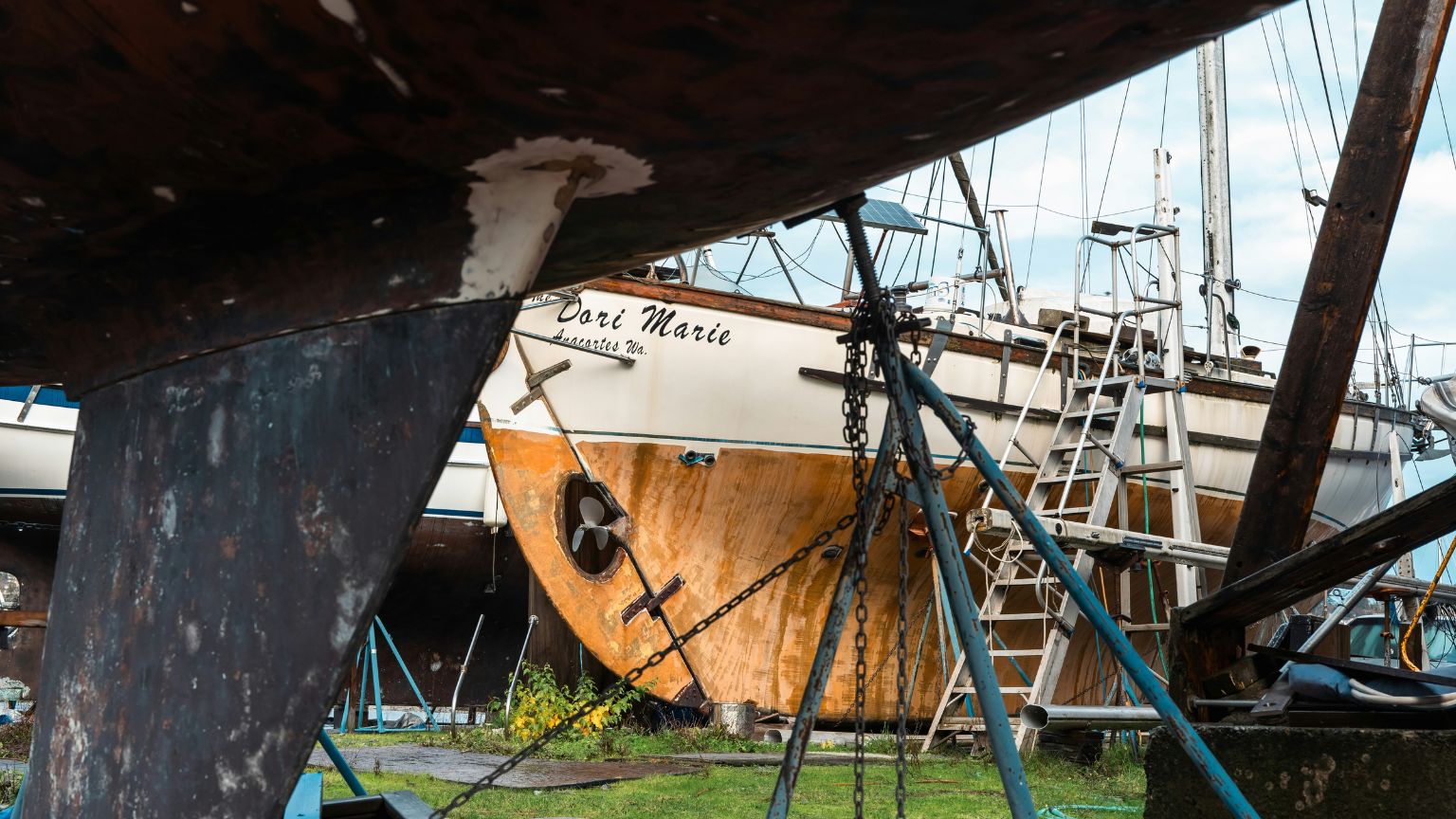When the sailing season ends, proper winter storage is crucial to protect your sailboat from harsh weather conditions, moisture damage, and costly repairs. Whether you store your boat on land or in the water, taking the right precautions will extend its lifespan and ensure a smooth start to the next season.
Why Store Your Boat for the Winter?
Sailboats are designed to withstand the elements, but prolonged exposure to freezing temperatures, ice, and storms can cause serious damage if not properly winterized. Storing your boat for the winter helps:
- Prevent hull damage – Freezing water expands and can cause cracks in fiberglass, wooden, or metal hulls.
- Protect the engine and plumbing – Water left in the engine, pipes, or tanks can freeze and expand, leading to costly repairs.
- Extend the lifespan of rigging and sails – Harsh winter conditions can wear down standing and running rigging, sails, and other deck hardware.
- Prevent mold and mildew – A properly stored boat reduces moisture buildup, which can lead to mold growth in the cabin and storage compartments.
- Save money on repairs – Taking precautions now prevents expensive maintenance in spring.
Where to Store Your Boat?
On Land (Dry Storage) – The Safest Option
Most boat owners choose to haul their boats out of the water and store them on land. This method prevents hull damage from ice and reduces overall wear.
Pros:
- No risk of hull damage from ice formation
- Easier access for maintenance and repairs
- No risk of sinking due to winter storms or ice expansion
- Lower marina fees compared to winter dockage
Cons:
- Requires a boat cradle or stands
- Haul-out and relaunching costs
- Exposure to wind, snow, and UV damage unless covered
Where to store?
- Marinas and boatyards – Offer professional storage, security, and sometimes maintenance services.
- Private property – If you have space at home, storing your boat in your backyard can save money.
In the Water (Wet Storage) – Limited to Ice-Free Areas
Some sailors prefer to leave their boats in the water, especially in regions where harbors do not freeze. However, this method requires additional precautions, such as ice prevention and regular checks.
Pros:
- Avoids haul-out costs
- No need for a boat cradle
- Less risk of hull stress from improper blocking on land
Cons:
- Risk of ice damage (unless in an ice-free marina)
- Constant monitoring required
- Higher marina costs for winter berthing
What to consider?
- Ice-free marinas – Some harbors use bubblers or de-icers to prevent ice from forming around boats.
- Extra mooring precautions – Stronger dock lines, fenders, and chafe protection are necessary for winter storms.
- Regular maintenance visits – Check bilges, pumps, and lines frequently to prevent freezing issues.
What You Need to Know About Sailboat Storage
Winterization Checklist
Hull & Deck:
- Wash and wax the hull to protect it from dirt and UV damage
- Check for cracks or blisters in the gelcoat (for fiberglass boats)
- Cover the boat with a breathable tarp or shrink wrap to prevent snow and moisture buildup
Engine & Fuel System:
- Change the oil and filters to prevent corrosion
- Run antifreeze through the engine cooling system
- Fill the fuel tank and add fuel stabilizer to prevent condensation and fuel degradation
Water & Plumbing:
- Drain all fresh water, black water, and gray water tanks
- Run non-toxic antifreeze through all plumbing lines, including sinks, toilets, and showers
- Remove or insulate water pumps and hoses
Batteries & Electrical System:
- Fully charge and disconnect batteries or store them in a warm, dry place
- Check and secure all wiring connections to prevent corrosion
Sails & Rigging:
- Remove sails, wash, and store them dry to prevent mildew
- Loosen standing rigging slightly to relieve tension during cold temperature shifts
- Remove and inspect running rigging, storing it in a dry place
Interior & Cabin:
- Open all lockers and hatches for ventilation
- Remove food, bedding, and valuables to avoid attracting pests
- Use moisture absorbers (like silica gel or dehumidifiers) to prevent mold
Final Thoughts
Proper winter storage is essential for keeping your sailboat in top shape and avoiding expensive repairs in the spring. Whether you choose dry storage or wet storage, winterizing the boat correctly will protect its hull, engine, plumbing, and interior from damage. Taking the time now to store your boat properly means a stress-free relaunch and more time on the water when sailing season returns!




